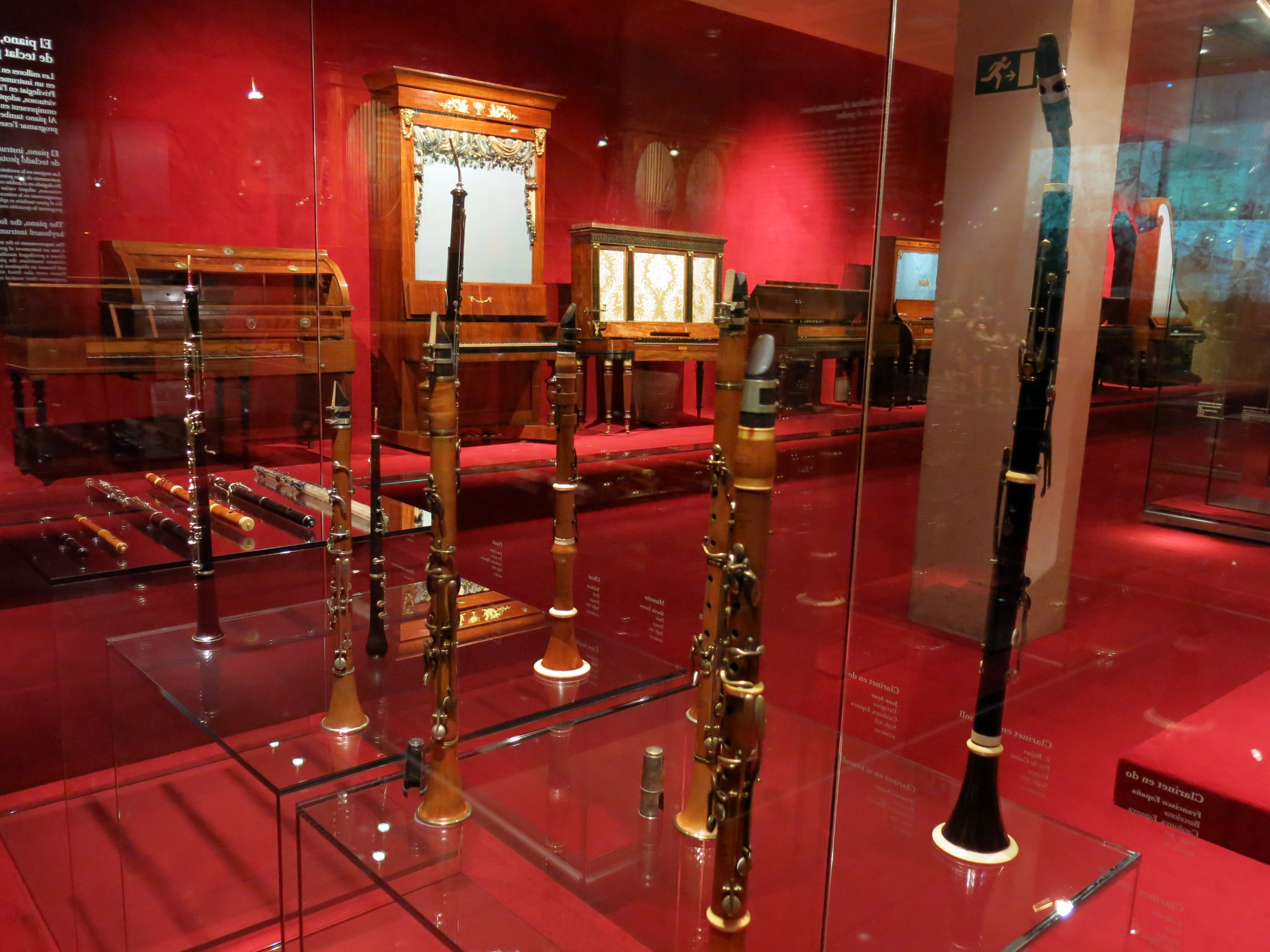|
Sketches From An Island 2
''Sketches from an Island 2'' is the second studio album of British producer Mark Barrott, released on 1 July 2016 by the International Feel label. The record is a follow-up to ''Sketches from an Island'' (2014), a record based on Barrott's experiences living in Ibiza. ''Sketches from an Island 2'' is a balearic downtempo album with the same concept, and was also produced by Barrott with the same equipment used for making ''Sketches from an Island''. ''Sketches from an Island 2'' garnered generally favorable reviews from music journalists, some reviewers spotlighting its musical style. Background and production When interviewed about his life and his debut studio album ''Sketches from an Island'' (2014) in March 2016, Mark Barrott said that he was not willing to make another record influenced by his experiences living in Ibiza: "If I was banned from making another field recording, I’d be good for 20 years. You want Barcelona airport? Bora Bora sunset? Tokyo bullet train statio ... [...More Info...] [...Related Items...] OR: [Wikipedia] [Google] [Baidu] |
Mark Barrott
Mark Barrott (born 1968) is an English DJ and record producer. Early life and career Barrott was raised in Sheffield.Cooper, Duncan (9 March 2016)"Making Chill Music On An Island Is Just As Amazing As You’d Imagine" ''The Fader''. Retrieved 25 July 2016. His father was an old car restorer. When Barrott was thirteen years of age in 1981, he began playing synthesizers in groups, motivated by watching a Sheffield City Hall live show of the band Kraftwerk."Fifteen Questions Interview with Mark Barrott" Fifteen Questions. p.1. Retrieved 26 July 2016. The works of was another influence of Barrott's early synthesizer car ... [...More Info...] [...Related Items...] OR: [Wikipedia] [Google] [Baidu] |
Woodwind
Woodwind instruments are a family of musical instruments within the greater category of wind instruments. Common examples include flute, clarinet, oboe, bassoon, and saxophone. There are two main types of woodwind instruments: flutes and reed instruments (otherwise called reed pipes). The main distinction between these instruments and other wind instruments is the way in which they produce sound. All woodwinds produce sound by splitting the air blown into them on a sharp edge, such as a reed or a fipple. Despite the name, a woodwind may be made of any material, not just wood. Common examples include brass, silver, cane, as well as other metals such as gold and platinum. The saxophone, for example, though made of brass, is considered a woodwind because it requires a reed to produce sound. Occasionally, woodwinds are made of earthen materials, especially ocarinas. Flutes Flutes produce sound by directing a focused stream of air below the edge of a hole in a cylindrical ... [...More Info...] [...Related Items...] OR: [Wikipedia] [Google] [Baidu] |
Minimalist
In visual arts, music and other media, minimalism is an art movement that began in post–World War II in Western art, most strongly with American visual arts in the 1960s and early 1970s. Prominent artists associated with minimalism include Donald Judd, Agnes Martin, Dan Flavin, Carl Andre, Robert Morris, Anne Truitt and Frank Stella. The movement is often interpreted as a reaction against abstract expressionism and modernism; it anticipated contemporary postminimal art practices, which extend or reflect on minimalism's original objectives. Minimalism in music often features repetition and gradual variation, such as the works of La Monte Young, Terry Riley, Steve Reich, Philip Glass, Julius Eastman and John Adams. The term ''minimalist'' often colloquially refers to anything or anyone that is spare or stripped to its essentials. It has accordingly been used to describe the plays and novels of Samuel Beckett, the films of Robert Bresson, the stories of Raymond Carver, an ... [...More Info...] [...Related Items...] OR: [Wikipedia] [Google] [Baidu] |
Analog Synth
An analog (or analogue) synthesizer is a synthesizer that uses analog circuits and analog signals to generate sound electronically. The earliest analog synthesizers in the 1920s and 1930s, such as the Trautonium, were built with a variety of vacuum-tube (thermionic valve) and electro-mechanical technologies. After the 1960s, analog synthesizers were built using operational amplifier (op-amp) integrated circuits, and used potentiometers (pots, or variable resistors) to adjust the sound parameters. Analog synthesizers also use low-pass filters and high-pass filters to modify the sound. While 1960s-era analog synthesizers such as the Moog used a number of independent electronic modules connected by patch cables, later analog synthesizers such as the Minimoog integrated them into single units, eliminating patch cords in favour of integrated signal routing systems. History 1900–1920 The earliest mention of a "synthetic harmoniser" using electricity appears to be in 1906, crea ... [...More Info...] [...Related Items...] OR: [Wikipedia] [Google] [Baidu] |
Digital Synthesizer
A digital synthesizer is a synthesizer that uses digital signal processing (DSP) techniques to make musical sounds. This in contrast to older analog synthesizers, which produce music using analog electronics, and samplers, which play back digital recordings of acoustic, electric, or electronic instruments. Some digital synthesizers emulate analog synthesizers; others include sampling capability in addition to digital synthesis. History The very earliest digital synthesis experiments were made with computers, as part of academic research into sound generation. In 1973, the Japanese company Yamaha licensed the algorithms for frequency modulation synthesis (FM synthesis) from John Chowning, who had experimented with it at Stanford University since 1971. Yamaha's engineers began adapting Chowning's algorithm for use in a commercial digital synthesizer, adding improvements such as the "key scaling" method to avoid the introduction of distortion that normally occurred in analog sy ... [...More Info...] [...Related Items...] OR: [Wikipedia] [Google] [Baidu] |
Fretless Bass
A fretless bass is a bass guitar whose neck does not have any frets. While the instrument is played in all styles of music, it is most common in pop, rock, and jazz. It first saw widespread use during the 1970s, although some players used them before then. Instead of being invented by an instrument manufacturer, the first fretless basses usually resulted from modifications made by bass guitar players. One of the first (if not the first) examples of this is Rolling Stones bassist Bill Wyman, who removed the frets from his bass guitar in 1961 to fix a fret buzz issue. The first fretless bass to be produced by a designated company is the Ampeg AUB1, first released in 1965. Characteristics The lack of frets allows for more fluid slides between notes, but also requires greater precision by the player, as the instrument may sound out of tune if notes are not fretted accurately. Like fretted bass guitars, they can have four, five, six, or even more strings. While some have "fret lines ... [...More Info...] [...Related Items...] OR: [Wikipedia] [Google] [Baidu] |
Instrumentation
Instrumentation a collective term for measuring instruments that are used for indicating, measuring and recording physical quantities. The term has its origins in the art and science of scientific instrument-making. Instrumentation can refer to devices as simple as direct-reading thermometers, or as complex as multi-sensor components of industrial control systems. Today, instruments can be found in laboratories, refineries, factories and vehicles, as well as in everyday household use (e.g., smoke detectors and thermostats) History and development The history of instrumentation can be divided into several phases. Pre-industrial Elements of industrial instrumentation have long histories. Scales for comparing weights and simple pointers to indicate position are ancient technologies. Some of the earliest measurements were of time. One of the oldest water clocks was found in the tomb of the ancient Egyptian pharaoh Amenhotep I, buried around 1500 BCE. Improvements were incorpo ... [...More Info...] [...Related Items...] OR: [Wikipedia] [Google] [Baidu] |
Krautrock
Krautrock (also called , German for ) is a broad genre of experimental rock that developed in West Germany in the late 1960s and early 1970s among artists who blended elements of psychedelic rock, avant-garde composition, and electronic music, among other eclectic sources. These artists incorporated hypnotic rhythms, extended improvisation, musique concrète techniques, and early synthesizers, while generally moving away from the rhythm & blues roots and song structure found in traditional Anglo-American rock music. Prominent groups associated with the krautrock label included Neu!, Can, Faust, Tangerine Dream, Kraftwerk, Cluster, Ash Ra Tempel, Popol Vuh, Amon Düül II and Harmonia. The term "krautrock" was popularized by British music journalists as a humorous umbrella-label for the diverse German scene, though many so-labeled artists disliked the term. The movement was partly born out of the radical student protests of 1968, as German youth rebelled against their country's l ... [...More Info...] [...Related Items...] OR: [Wikipedia] [Google] [Baidu] |
Ambient Music
Ambient music is a genre of music that emphasizes tone and atmosphere over traditional musical structure or rhythm. It may lack net composition, beat, or structured melody.The Ambient Century by Mark Prendergast, Bloomsbury, London, 2003. It uses textural layers of sound that can reward both passive and active listening and encourage a sense of calm or contemplation. The genre is said to evoke an "atmospheric", "visual",Prendergast, M. ''The Ambient Century''. 2001. Bloomsbury, USA or "unobtrusive" quality. Nature soundscapes may be included, and the sounds of acoustic instruments such as the piano, strings and flute may be emulated through a synthesizer. The genre originated in the 1960s and 1970s, when new musical instruments were being introduced to a wider market, such as the synthesizer. It was presaged by Erik Satie's furniture music and styles such as musique concrète, minimal music, and German electronic music, but was prominently named and popularized by Br ... [...More Info...] [...Related Items...] OR: [Wikipedia] [Google] [Baidu] |
Financial Times
The ''Financial Times'' (''FT'') is a British daily newspaper printed in broadsheet and published digitally that focuses on business and economic current affairs. Based in London, England, the paper is owned by a Japanese holding company, Nikkei, with core editorial offices across Britain, the United States and continental Europe. In July 2015, Pearson sold the publication to Nikkei for £844 million ( US$1.32 billion) after owning it since 1957. In 2019, it reported one million paying subscriptions, three-quarters of which were digital subscriptions. The newspaper has a prominent focus on financial journalism and economic analysis over generalist reporting, drawing both criticism and acclaim. The daily sponsors an annual book award and publishes a "Person of the Year" feature. The paper was founded in January 1888 as the ''London Financial Guide'' before rebranding a month later as the ''Financial Times''. It was first circulated around metropolitan London by James Sherid ... [...More Info...] [...Related Items...] OR: [Wikipedia] [Google] [Baidu] |
The Arts Desk
''The Arts Desk'' (theartsdesk.com) is a British arts journalism website containing reviews, interviews, news, and other content related to music, theatre, television, films, and other art forms written by journalists from a variety of traditional and web-based publications. It launched in September 2009 as a shareholder collective. From 2010 to 2013, its honorary chairman was Sir John Tusa, former managing director of the BBC World Service and of the Barbican Centre. In 2012, it won an Online Media Award as the best specialist journalism site, jointly with the website for ''The Economist ''The Economist'' is a British weekly newspaper printed in demitab format and published digitally. It focuses on current affairs, international business, politics, technology, and culture. Based in London, the newspaper is owned by The Econ ...''. Notable contributors to the website include; Aleks Sierz, Jasper Rees, Matt Wolf, Ismene Brown, Joe Muggs, Tom Birchenough, David Nice, ... [...More Info...] [...Related Items...] OR: [Wikipedia] [Google] [Baidu] |



.jpg)
